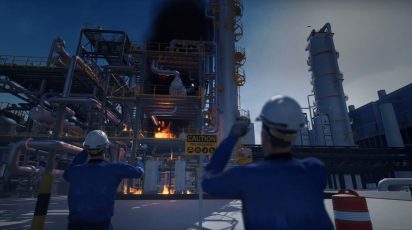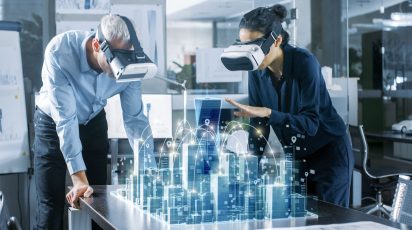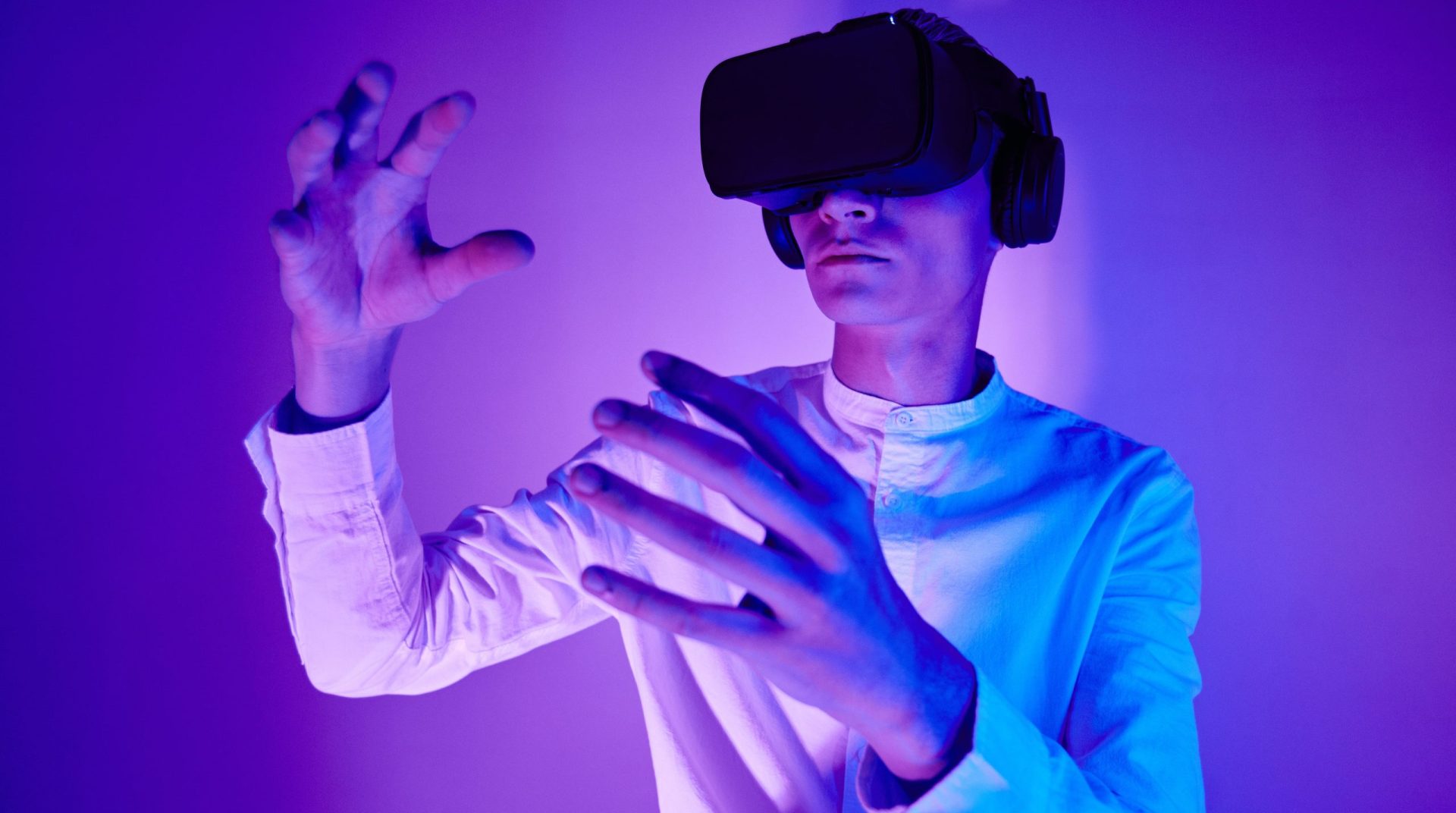
November 24, 2021
Hand tracking: taking VR training to a whole new level
Over the past few blogs, we have written about what the future will bring in our industry, how we can use metaverse technology to train the workforce, and how VR streaming works and its potential for the oil and gas industry. These topics piqued the interest of our readers, so this week we are bringing you another topic that is a distant reality already. In today’s blog we will look at the amazing hand-tracking technology, the great features it brings and the few downsides to it at present.
What is hand tracking?
Hand tracking in virtual reality is the technology we use to be able to interact with the virtual world without the need for VR controllers. This means your hands are used as the inputs. Hand tracking isn’t possible without numerous sensors which, in Ultraleap’s words, ‘capture data on the position, orientation, and velocity of the user’s hands. This data is then paired with a hand-tracking software program to create an immersive virtual reality experience in which hand movements and interactions feel completely intuitive.
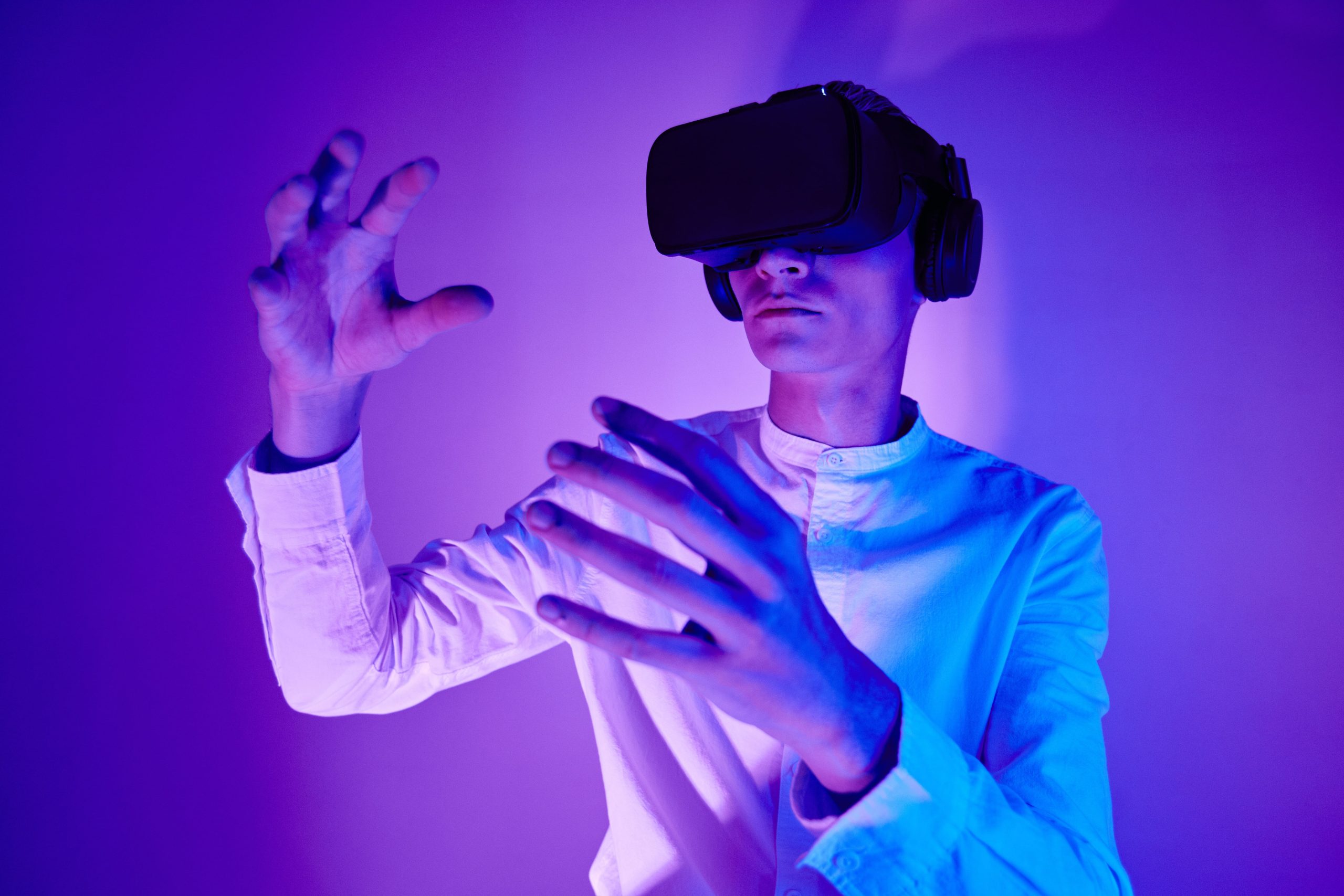
As explained above, a hand-tracking system consists of hardware and software. To clarify, the hardware is made of sensors, usually cameras, that capture the movements of your hands, their orientation and their momentum. These cameras can be attached to or integrated into your VR headset and they capture even the smallest movements of your hands. The software acts as the engine for the hand-tracking technology. It collects the raw data from the sensors and turns it into a real-time virtual image of your hands within the app. Depending on the software itself, this virtual image may or may not be realistic but the purpose is the same: to create an immersive experience without the need for controllers to interact with the virtual environment.
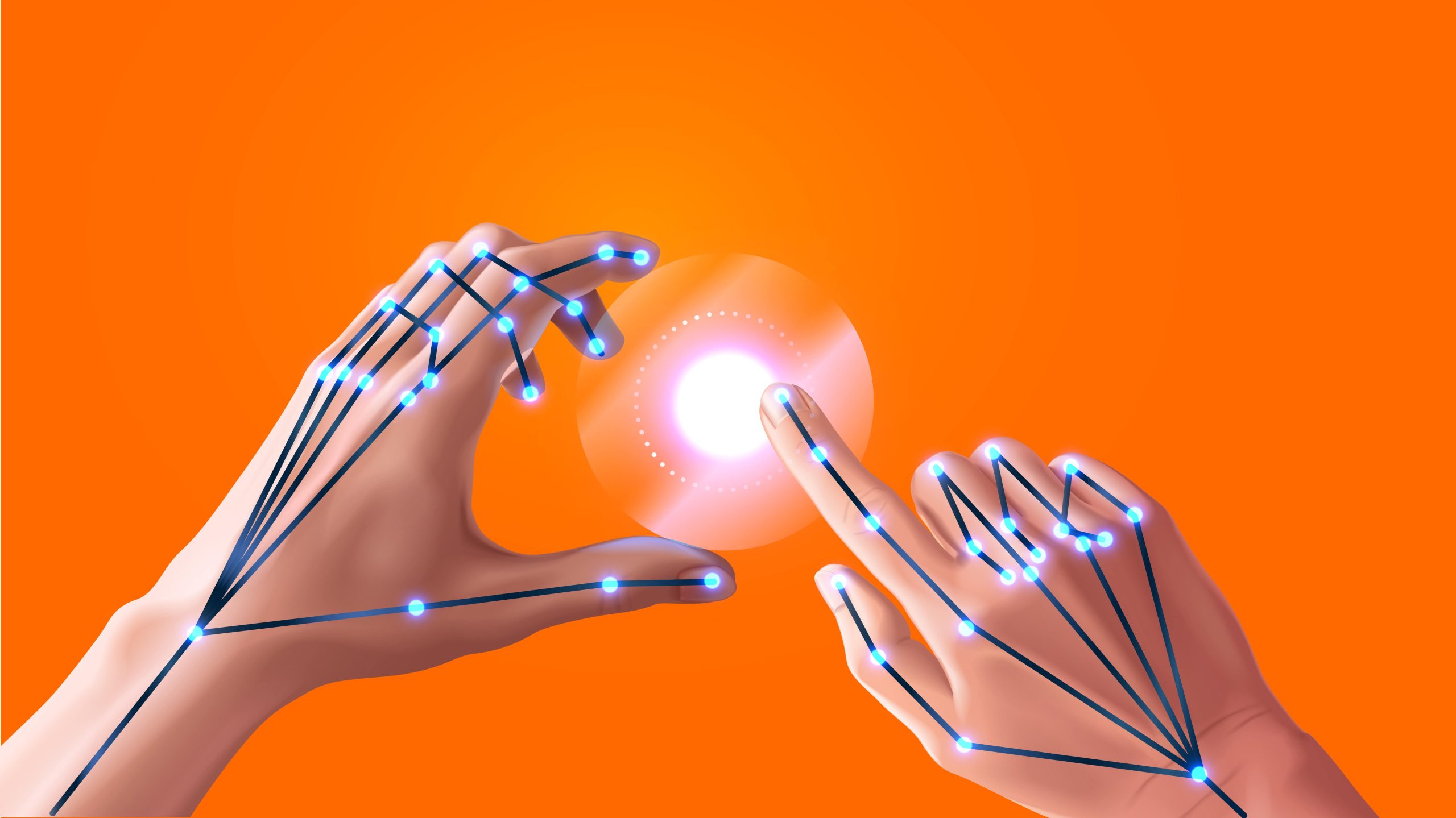
How does hand tracking work?
Although it might seem like a complex procedure, the process is actually pretty simple.
- Input devices detect hand movements.
- The input searches through the database to find the exact hand pose.
- VR software analyses the previous inputs.
- The software renders the hand in real-time in the virtual environment.
This process happens in a matter of milliseconds, so the human eye doesn’t even notice a delay. Needless to say, the synchronization in this process is just remarkable. Human society is highly adaptable and always in need of new technologies and solutions. Remember the first time you heard about smartphones? Today you can’t imagine life without them. What was once a fantasy, becomes reality in a matter of months. Now imagine using your phone or computer without physical interaction. All you need are the tools you were given at birth – your hands.
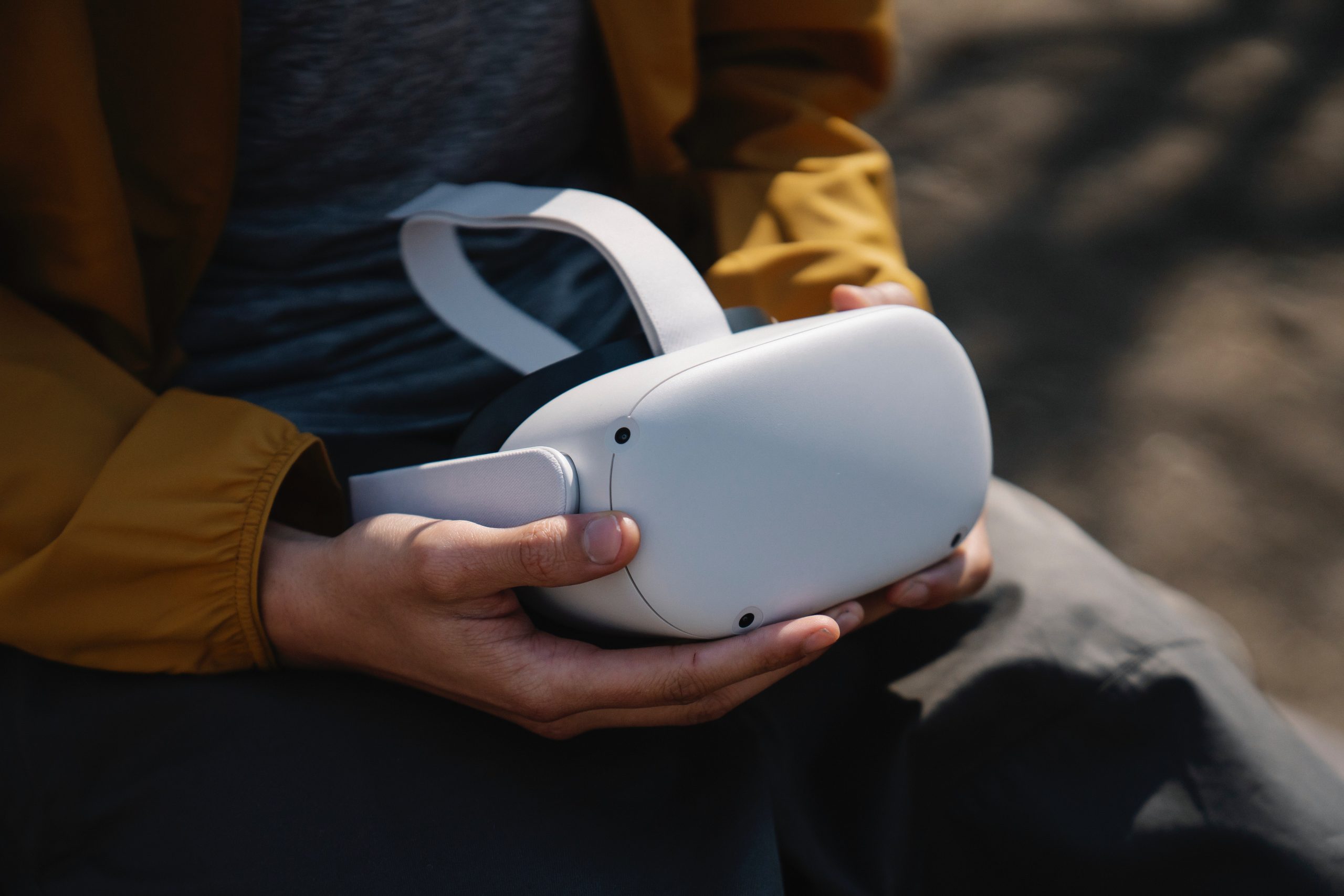
While controllers still serve their purpose and help us interact with vessels, valves and other assets, compared to hand tracking they sometimes feel a bit unnatural. Hand tracking has the ability to take the VR experience to a whole new level. With the features it brings, users are able to use virtual reality in a completely intuitive way.
Benefits for the oil and gas industry
We have explained that hand-tracking technology could enhance workforce training in our industry, but we haven’t explained how exactly. Below are three significant benefits of hand tracking and how could change the training system as we know it.
1. Higher efficiency
VR training has already boosted the numbers in terms of learning efficiency, but hand tracking is expected to boost these even more. Controllers are not used during a maintenance procedure in real life so it is clear that using hand tracking for educational purposes improves the realism of training.
2. Realistic feeling
By using a hand-tracking system, the ergonomics match natural hand movements, which allows the hand to do exactly what it would usually do in reality. There is no need to remember which button to press at what moment, or at what angle you need to tilt the controller in order to open the valve. Movements are completely realistic.
3. Less hardware
Once hand tracking becomes more accessible, it will also require much less hardware, as some of today’s VR headsets are standalone and come with built-in hand-movement cameras. Workstations will also be an option rather than a necessity as trainees could use any empty room to do the training.
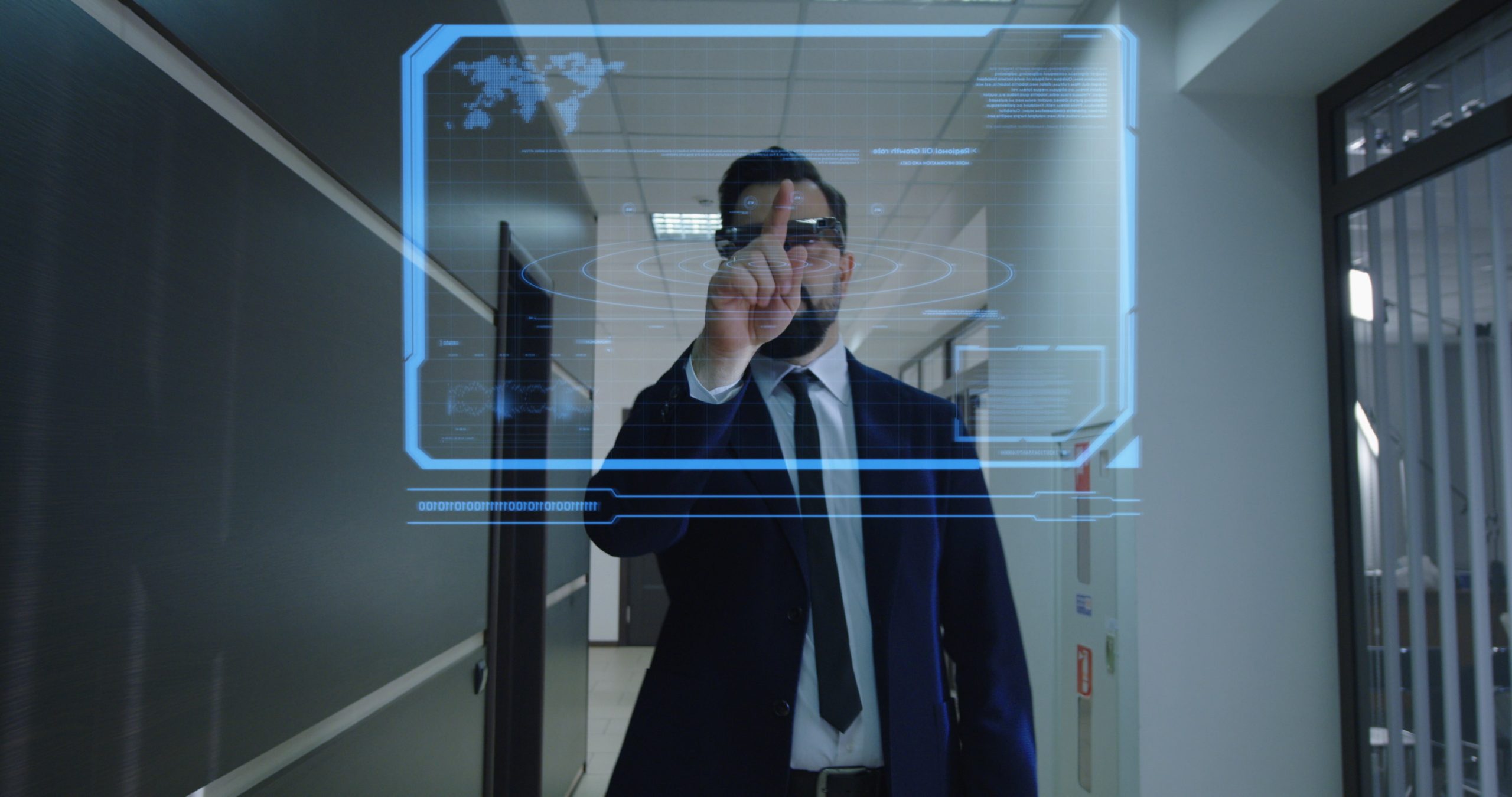
The downsides and how to overcome them
Although hand tracking in VR sounds like a great solution for some specific issues we face every day, the technology is still in its early stage of development. This means that the basics are available but experts are still working on an advanced version, the one that will revolutionize our industry. ‘The hardware does not recognize your hands when they overlap. And the objects in VR do not give tactile feedback upon touching them, which is a bit of a let-down,’ explained Sam from Linux Hint.
We at Linde are eager to adopt new and creative technologies. Hence, we have investigated hand tracking and started to offer a basic version of it to our VR users. While hand-tracking technology has a long way to go, we will keep our eyes open and take every opportunity to enhance our VR experience. Stay in touch with us to be the first to hear about developments.


